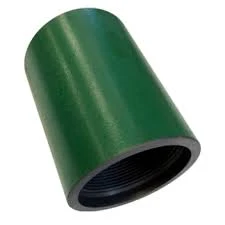- Afrikaans
- Albanian
- Amharic
- Arabic
- Armenian
- Azerbaijani
- Basque
- Belarusian
- Bengali
- Bosnian
- Bulgarian
- Catalan
- Cebuano
- Corsican
- Croatian
- Czech
- Danish
- Dutch
- English
- Esperanto
- Estonian
- Finnish
- French
- Frisian
- Galician
- Georgian
- German
- Greek
- Gujarati
- Haitian Creole
- hausa
- hawaiian
- Hebrew
- Hindi
- Miao
- Hungarian
- Icelandic
- igbo
- Indonesian
- irish
- Italian
- Japanese
- Javanese
- Kannada
- kazakh
- Khmer
- Rwandese
- Korean
- Kurdish
- Kyrgyz
- Lao
- Latin
- Latvian
- Lithuanian
- Luxembourgish
- Macedonian
- Malgashi
- Malay
- Malayalam
- Maltese
- Maori
- Marathi
- Mongolian
- Myanmar
- Nepali
- Norwegian
- Norwegian
- Occitan
- Pashto
- Persian
- Polish
- Portuguese
- Punjabi
- Romanian
- Russian
- Samoan
- Scottish Gaelic
- Serbian
- Sesotho
- Shona
- Sindhi
- Sinhala
- Slovak
- Slovenian
- Somali
- Spanish
- Sundanese
- Swahili
- Swedish
- Tagalog
- Tajik
- Tamil
- Tatar
- Telugu
- Thai
- Turkish
- Turkmen
- Ukrainian
- Urdu
- Uighur
- Uzbek
- Vietnamese
- Welsh
- Bantu
- Yiddish
- Yoruba
- Zulu
Understanding the Functionality and Applications of Pipe Bull Plugs in Plumbing Systems
Understanding Pipe Bull Plugs An Essential Guide for Professionals
In the world of plumbing and construction, ensuring the integrity of fluid transport systems is crucial. One of the essential components that assist in maintaining this integrity is the pipe bull plug. In this article, we will delve into what pipe bull plugs are, their applications, types, and best practices when using them.
What is a Pipe Bull Plug?
A pipe bull plug is a type of pipe fitting designed to seal off a fitting or a section of pipe. Also commonly known as a “blind plug” or simply a “plug,” it is typically used to close the end of a pipe to prevent the flow of liquids or gases. Bull plugs are essential in a variety of applications, ensuring that systems maintain their pressure and integrity without any leaks.
Applications of Pipe Bull Plugs
Pipe bull plugs are versatile and can be used in numerous applications across various industries. They are commonly found in
1. Water Supply Systems To halt the flow when repairs or maintenance are required. 2. Wastewater Systems Preventing backflow and sealing off inactive lines helps maintain system effectiveness. 3. Oil and Gas Industries Used extensively to seal pipe sections during transportation and storage. 4. Manufacturing Processes In various production lines, bull plugs help ensure that systems do not lose pressurized fluids.
Their utility in ensuring safety and efficiency makes pipe bull plugs indispensable in maintaining operational flow.
Types of Pipe Bull Plugs
Pipe bull plugs come in several types and sizes, each designed for specific situations or systems. Understanding the different types is crucial for professionals when selecting the right plug for a given task. The primary types include
1. Threaded Bull Plugs Featuring internal or external threads, these plugs screw into the pipe fitting securely, allowing for easy installation and removal. They are often used in systems where adjustments may be required frequently.
pipe bull plug

2. Welded Bull Plugs Ideal for high-pressure systems, welded plugs are permanently attached to the pipe. This type ensures a tight seal and is commonly used in applications where integrity must not be compromised.
3. Non-Tapered Bull Plugs These are designed with a straight profile, making them useful for standard pipe sizes. They provide a reliable seal for both pressurized and non-pressurized systems.
4. Angle Bull Plugs These plugs feature an angled design allowing for more versatile installation options, particularly in tight spaces or where the pipe has to change direction.
Best Practices for Using Pipe Bull Plugs
To ensure optimal performance and longevity, several best practices should be adhered to when using pipe bull plugs
1. Choose the Right Material Bull plugs are made from various materials like PVC, stainless steel, or brass. Selecting the appropriate material based on the application’s temperature and chemical exposure is vital. For example, PVC is suitable for most low-pressure water systems, while stainless steel could be required for high-pressure, corrosive oxygen lines.
2. Proper Installation Always ensure that the plug is installed correctly—free from debris and tightly fitted. Using the right tools and methods can prevent leaks and prolong the lifespan of both the plug and the connected piping.
3. Regular Inspections Like any other component of your plumbing or gas system, bull plugs should be regularly inspected for wear and tear. This practice can prevent most issues before they lead to serious problems.
4. Consider Pressure Ratings Always check the pressure ratings of the bull plug to ensure it can withstand the operating conditions. This is particularly important in high-pressure applications.
Conclusion
Pipe bull plugs play a vital role in ensuring the efficiency and safety of various plumbing and industrial systems. Gaining an understanding of their functions, types, and proper handling can aid professionals in effectively managing their projects. By selecting the right plug and adhering to best practices, you can successfully maintain the integrity of your piping systems. As with any fitting, keeping abreast of advancements in materials and technology will only enhance performance and safety in your applications.
-
Tubing Pup Joints: Essential Components for Oil and Gas OperationsNewsJul.10,2025
-
Pup Joints: Essential Components for Reliable Drilling OperationsNewsJul.10,2025
-
Pipe Couplings: Connecting Your World EfficientlyNewsJul.10,2025
-
Mastering Oilfield Operations with Quality Tubing and CasingNewsJul.10,2025
-
High-Quality Casing Couplings for Every NeedNewsJul.10,2025
-
Boost Your Drilling Efficiency with Premium Crossover Tools & Seating NipplesNewsJul.10,2025







